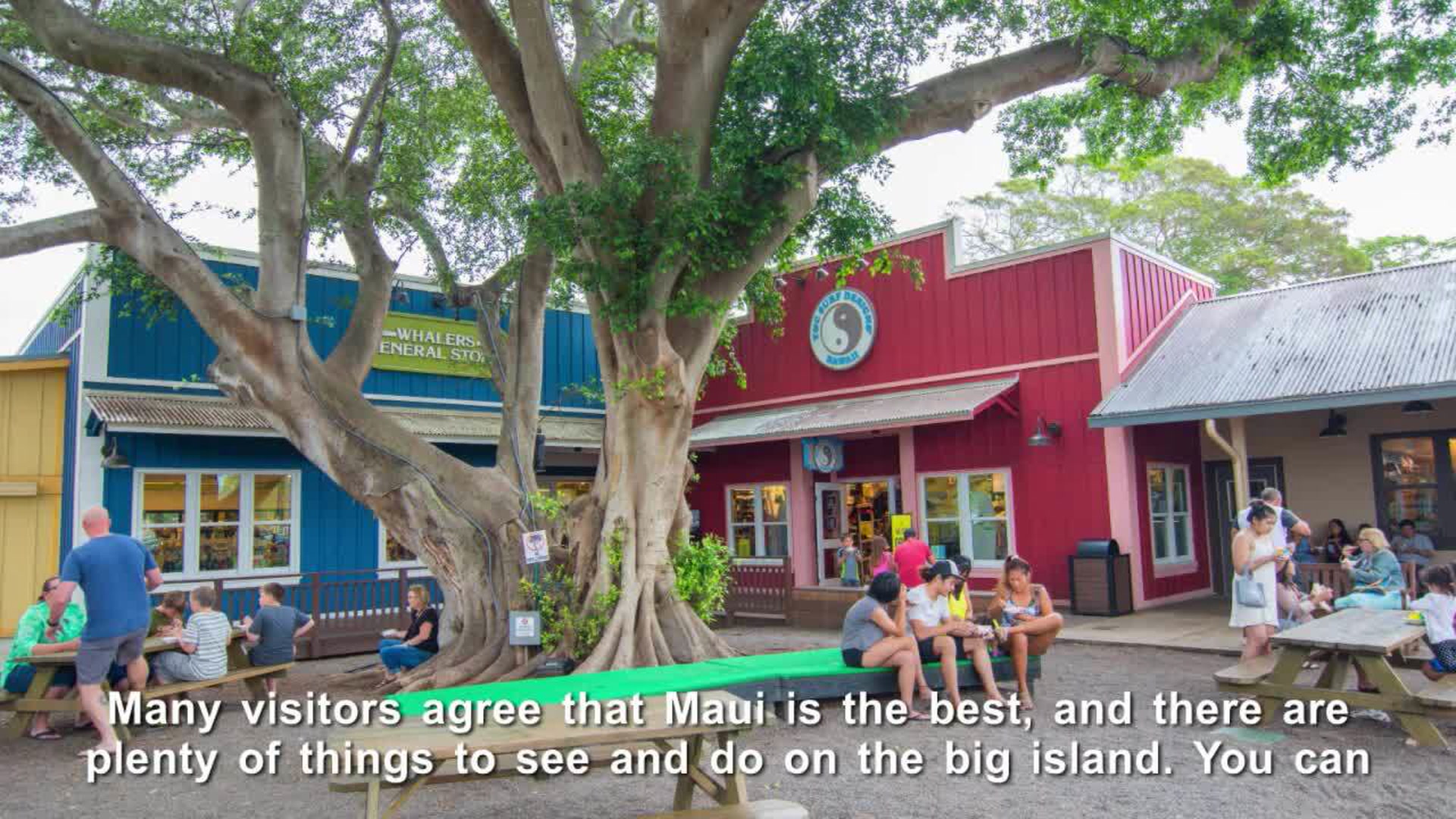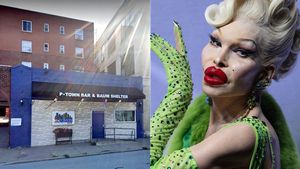Calling Hawaii the classic honeymoon destination almost seems like an understatement; its swaying palms and volcanic crags have beckoned beach seekers ever since commercial airliners could complete the transpacific lift from the continental United States. A million travelers touched down on the tiny islands in 1967, and since then the number has continued to grow at an unwavering rate, reaching almost 9 million visitors last year in search of the perfect getaway.
But you don't need to puddle-jump between the islands of the archipelago for the complete Hawaii package. Instead, follow the saying "Maui no ka oi"--Maui is the best--and bed down in the place that locals lovingly refer to as the Goldilocks island for its astonishing breadth of experiences.
The quintessential large-scale Hawaiian resort experience as seen in credit card ads is perfected along the beachside development of Wailea. With statistically the least amount of rain on the island (due to the cloud-shredding mountain of Haleakala overhead), Wailea's oceanfront is a veritable parade of name-brand luxury properties, each proffering its own style of island charm.
The guest rooms at Grand Wailea, a Waldorf Astoria Resort, regally extend like giant spider legs to occupy the largest tract of sand in the region. Bathed in white, the behemoth tries its hand at a regal aesthetic, blending internationally acclaimed art--like dozens of large-scale Botero sculptures--with a distinctive tropical vibe.
Although the hotel has cruise-ship proportions, it's interesting to note that rocky outcrops at the corner of the property host a thriving colony of sea turtles who pick at the coral crag in search of food. Guests can sign up for stand-up paddleboarding or kayaking tours with Aqualani for short trips around the bay or they can swim with the turtles in their natural habitat.
Maui's western coast feels light-years away from the grand resort development in Wailea. Anchored around the town of Lahaina, the area is interspersed with hotels and local haunts in equal measure as the coastal roads wind in and out of local communities. A gourmand's dream, western Maui is best explored by the plate, taking travelers far beyond poke to appreciate the archipelago's extensive culinary vocabulary spawned by the unique intermingling of immigrant cultures.

Start with breakfast at Cane & Canoe, the in-house restaurant at Montage Kapalua (MontageKapalua.com). Best enjoyed from the balcony of your oversize apartment-style suite, your first meal of the day will immediately introduce your palate to several fusion Hawaiian favorites like the local rice bowl, complete with hardy Portuguese sausage, or the more playful ahi Benedict, swapping out slices of ham and creamy hollandaise for local ahi and a wasabi marinade. Try the guilt-free Pitaya bowl--it's like a frozen superfood smoothie on a plate, topped with toasted coconut flakes.
Mala Ocean Tavern sits so close to the water's edge in downtown Lahaina that the waves often spritz diners sitting on the outside patio. Mala, which means "garden" in Hawaiian, is the brainchild of chef-owner Mark Ellman, one of the dozen noted restaurateurs responsible for pushing Hawaii's regional-cuisine movement forward on an international scale. Its seared ahi bruschetta is so popular you'll get dirty looks from neighboring patrons if you don't put in a request for at least a half-order.
Crammed in the back of an industrial park, Star Noodle may not have the idyllic setting of the area's other top restaurants, but it pulls in an unending stream of diners with its pan-Asian comfort food. Start with the pohole salad--a bowl of local fiddlehead ferns soaked in fish sauce to pull out those elusive inflections of umami.
Then try the Hapa ramen ("hapa" is a local slang term meaning "half," for someone of mixed heritage), which takes the tasty tenets of porky broth and lightens the palate with local vegetables. You also can't go wrong with the pillowy steamed pork buns or the "ahi avo" (the restaurant's refined take on poke). Just don't forget to grab a plate of daintily fried malasadas (Portuguese doughnut holes brought to the Hawaiian islands long ago) for dessert.
Bridging the gap between western Maui and the farms of the island's upcountry, Paia is worth a pit stop for a meal at Mama's Fish House Restaurant & Inn. The large beachside eatery has become nothing short of a local legend for its tiki-chic decor and seafood, which is so fresh that the waiters can tell you the names of the fishermen who caught it. The trio of sashimi--Mama's signature appetizer--will make you rethink your takeout sushi back home, and don't miss the grilled he'e (perfectly tender octopus) with a heaping portion of line-caught opakapaka (delicate Hawaiian snapper). Ginger from the island's east coast and vanilla from nearby French Polynesia bolster the flavors, but the fresh catches and expert preparation need little enhancement.

Beyond Paia, the straight road begins to curve and ripple like a flag in the wind as it hugs the unforgiving edges of the island's northeastern coastline. Traffic signs recommend an impossibly slow 15 miles per hour at several of the hairpin turns--a worthy warning, lest you be tossed over the railing into a valley of cracked lava and wildflowers more than 1,000 feet below.
It's only around 35 miles to the storied village of Hana at Maui's far eastern edge, but the drive takes about two hours to negotiate its serpentine path--or longer for any curious soul eager to uncover hidden viewpoints or cliff-dive into secreted waterfalls along the way. There are dozens of points at which to pull the car over, but only two places that no traveler should miss: Waianapanapa State Park and Keanae. Both locations unite the choppy Pacific sea with the charcoal-like remains of ancient molten flows. Eons ago, as the splashes of lava from above met the cool waters down below, they quickly solidified into the dramatic fingers of stone we see today, now blanketed by carpets of tropical greens. Although neither area is suitable for swimming, there's something mesmerizing about standing ankle-deep in one of the tide pools created as the rolling white waves plow through the fortresses of frozen magma.
At long last the hamlet of Hana appears as the road starts to straighten out ever so slightly. The metal warning signs about upcoming turns transform into handmade wooden boards advertising shaved ice or homemade banana bread. Often perceived as a pit stop for lunch, Hana is best experienced at dusk after the day trippers have made their way back to the more developed parts of the island.
Because of its secluded positioning facing directly east toward the rising sun and a microclimate that benefits from refreshing splashes of tropical rain, Hana practically feels like a private island destination. In fact, for years before the mountain road was hacked into the side of the cliff, the isolated community was accessible only by sea--its large harbor, once used to load supple fruit and mounds of cane, is now a moody bay dotted with outrigger canoes.
Small houses along the one seaside street casually offer rooms for rent. There's only one proper resort in the village, Travaasa Hana, which embraces a palpably simple aesthetic as the perfect antidote to the mega-resorts elsewhere on the island.
Televisions and air-conditioning are swapped for cool westerly breezes and sunrise yoga sessions are held among the grassy campus of timber-frame cottages. While the dedication to the duality of wellness--both physical and mental--lures travelers to spend a few nights, it's the disarming nature of the local staff (most of whom are related to one another) that will have you talking about your visit for years to come.
Before heading home, consider one final experience away from the crowds. Linked to Maui by public ferry, the small island of Lanai is culturally tethered to its big brother. According to legend, the long-ago king of Maui had a foolish son. Fearing that his child would never mature to become a capable leader, he sent the prankster prince to nearby Lanai, which was, at the time, an inhospitable realm of ghouls and cannibalistic wraiths. The king's son vanquished the evil spirits using his trademark trickery and lit a bonfire to mark his victory. When the king saw the flames from across the bay, he sent his men to collect his son, whose newfound bravery forgave his bad deeds. He then offered him control of the island.
Today, the fantastical history of Lanai's settlement is detailed on two stunning murals above the entry hall of the island's only hotel, the recently refurbished Four Seasons Lanai. Guests can relax in shaded nooks around the amoeboid-shaped pool or walk down to the island's only swimmable beach and stunning house reef, Manele Bay, below. The entire property has a distinctive Far East vibe with its dark wood paneling and fiery blossoms of exotic flowers. The Asian aesthetic is fully realized in the privacy of the suites with the use of slatted mirroring that evokes the sliding tatami walls of traditional Japan.
Although the resort was built for ultimate relaxation, its staff is keen to point out the surplus of available amenities, including an on-site outpost of the Nobu franchise (which somehow tastes even better when you know the sushi came straight from the sea out back), a designated skeet-shooting school, and an armada of white jeeps for guests to explore the more remote reaches of the little island.
Rolling through Lanai's backcountry, it's easy to appreciate why the island had once garnered such an unfavorable reputation in ancient lore. Whereas Maui next door is pleasantly lush, the barren vistas of Lanai resemble the surface of the moon.
Keahiakawelo, or the Garden of the Gods, in the center of the island encapsulates the thirsty nature of the terrain with its stacks of red-hot stones, wind-tossed tumbleweeds, and eroded sandy tracts. The signature orange rocks tumble all the way down to the sea at Kaiolohia -- Shipwreck Beach--where the rusting carcass of a hulking cruise liner further adds to the island's haunting mystique.
While the parched landscape provides the perfect counterpoint to Maui's diverse holiday offerings, its best asset is its no-filter-needed panorama of the Goldilocks island from across the channel, complete with its rippled volcanic ridges, low-slung village outposts, and a halo of clouds crowning Haleakala.
Like what you see here? Subscribe and be the first to receive the latest issue of Out. Subscribe to print here and receive a complimentary digital subscription.




























































